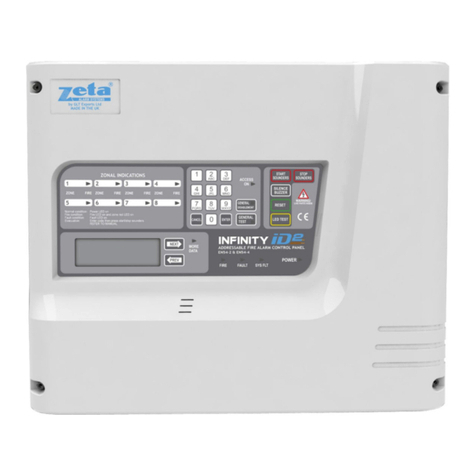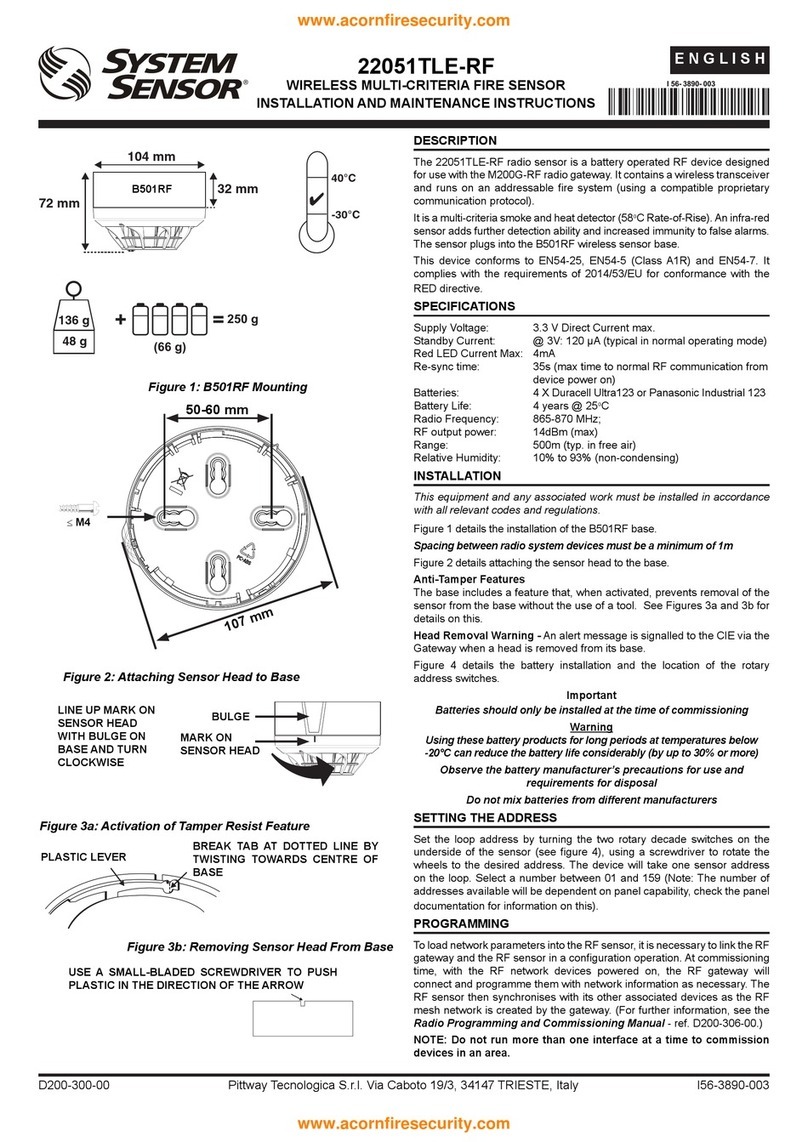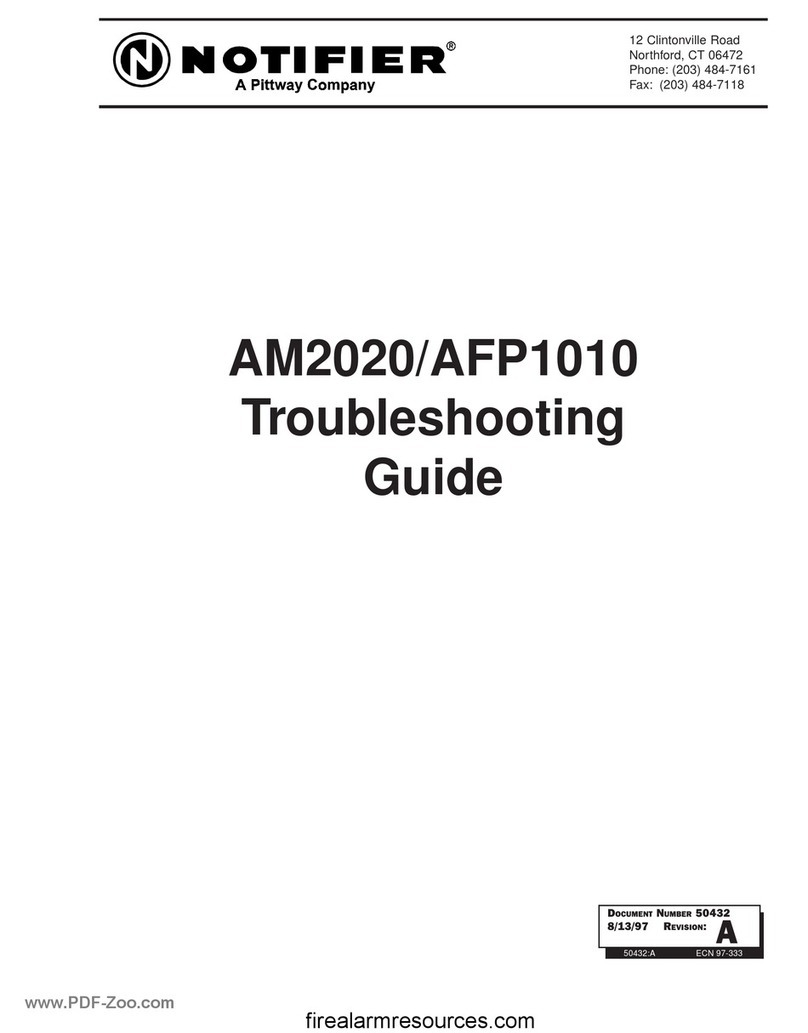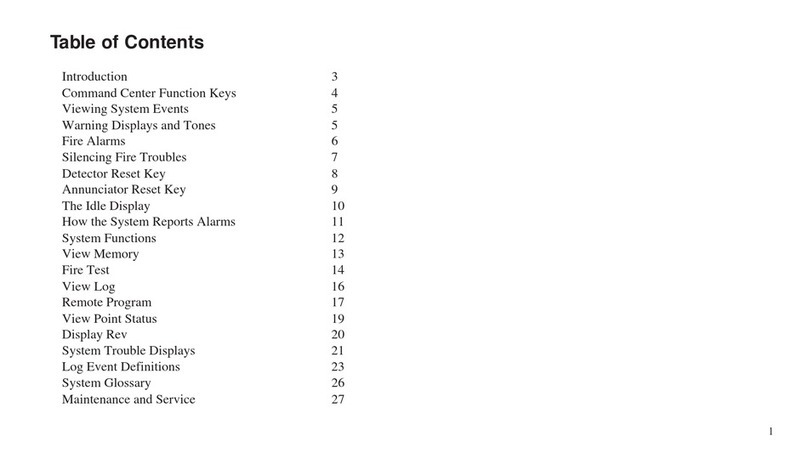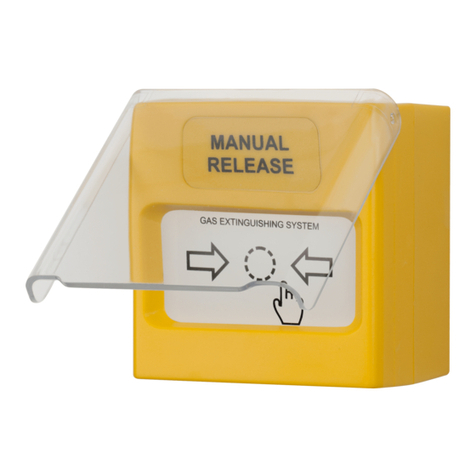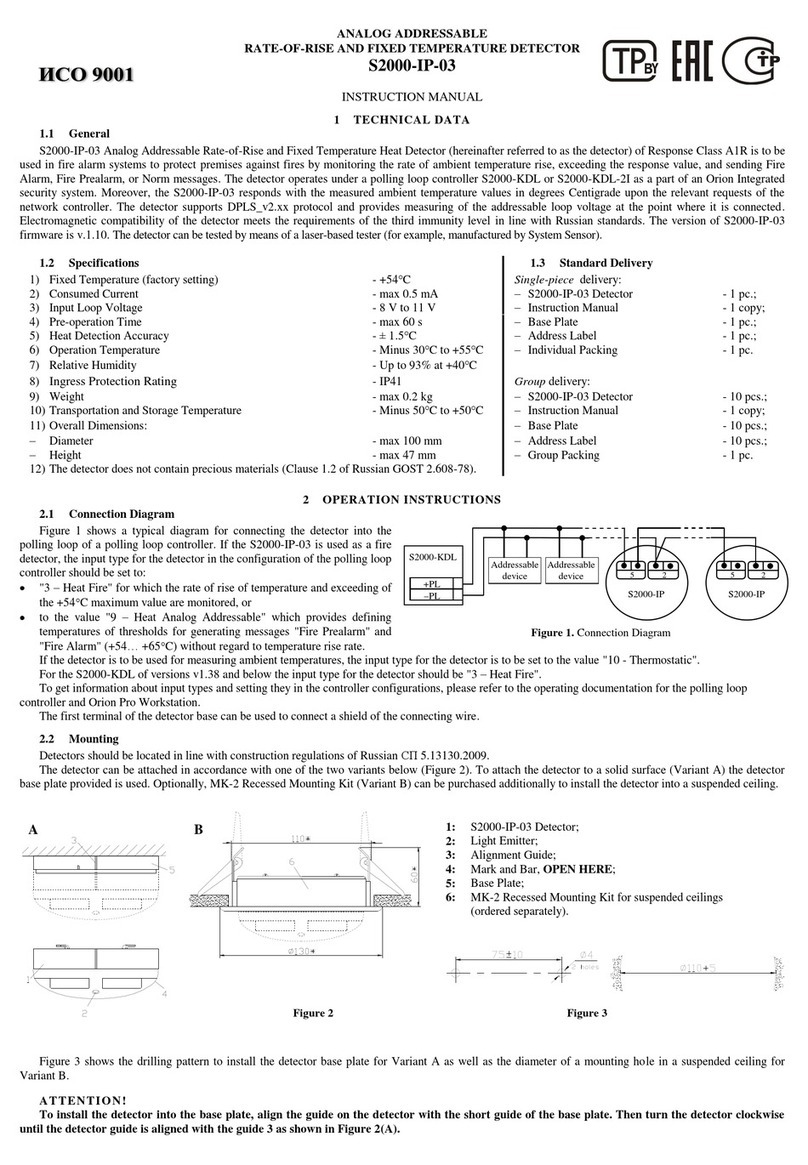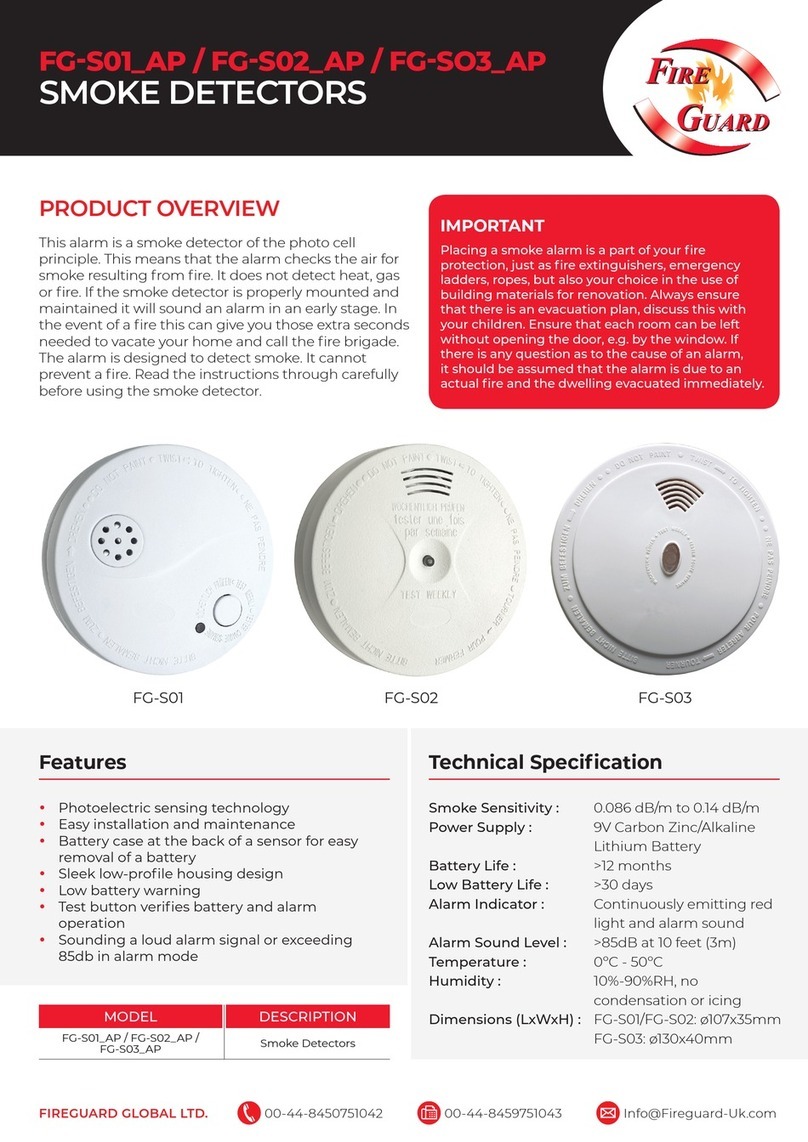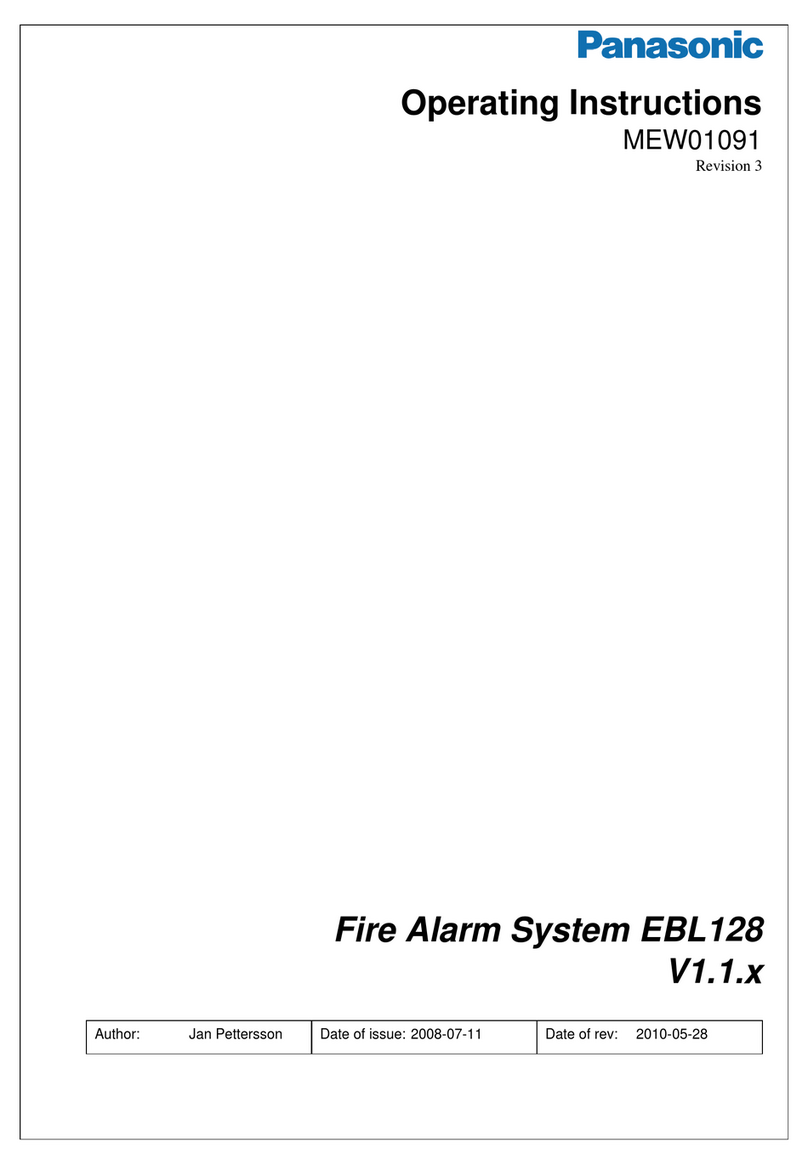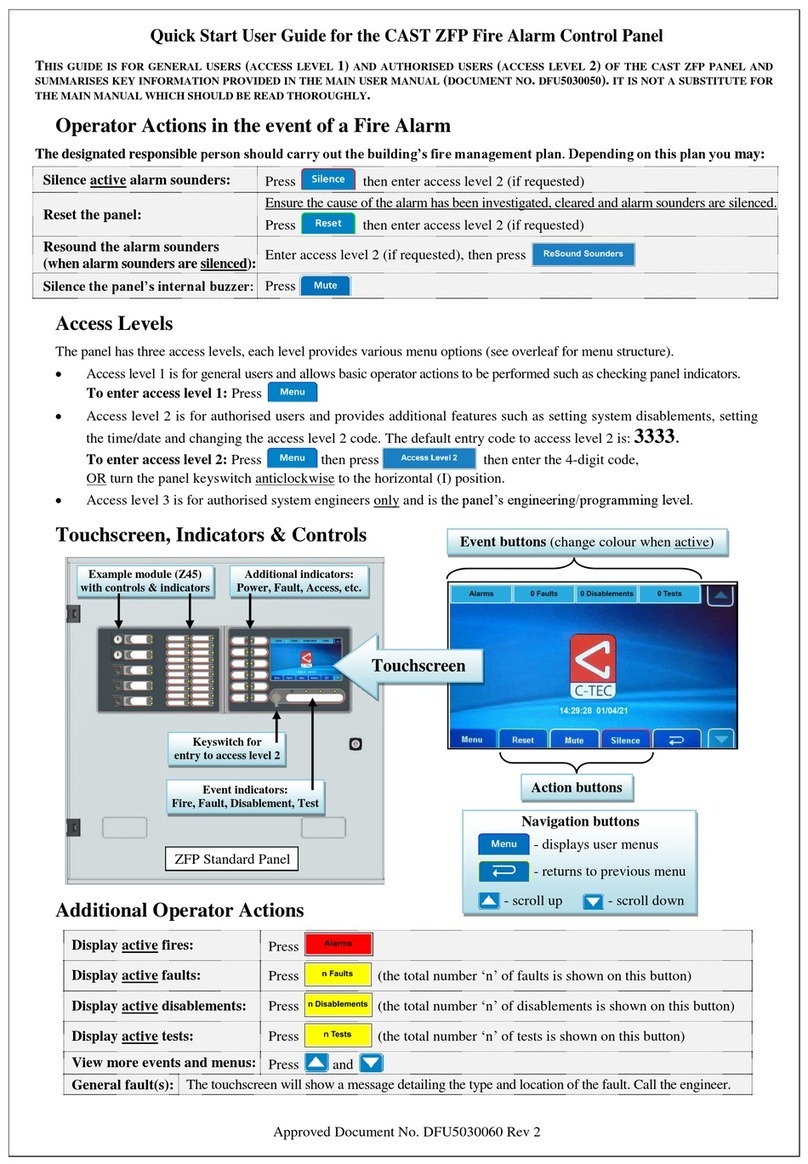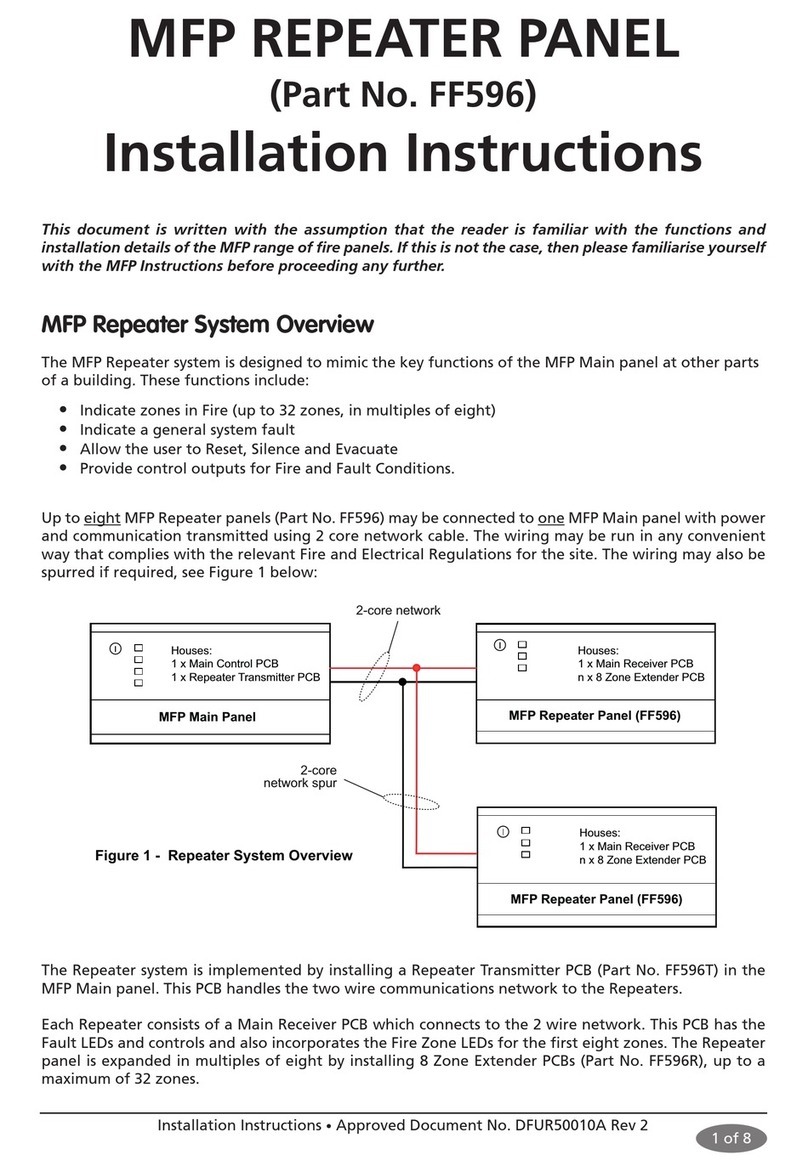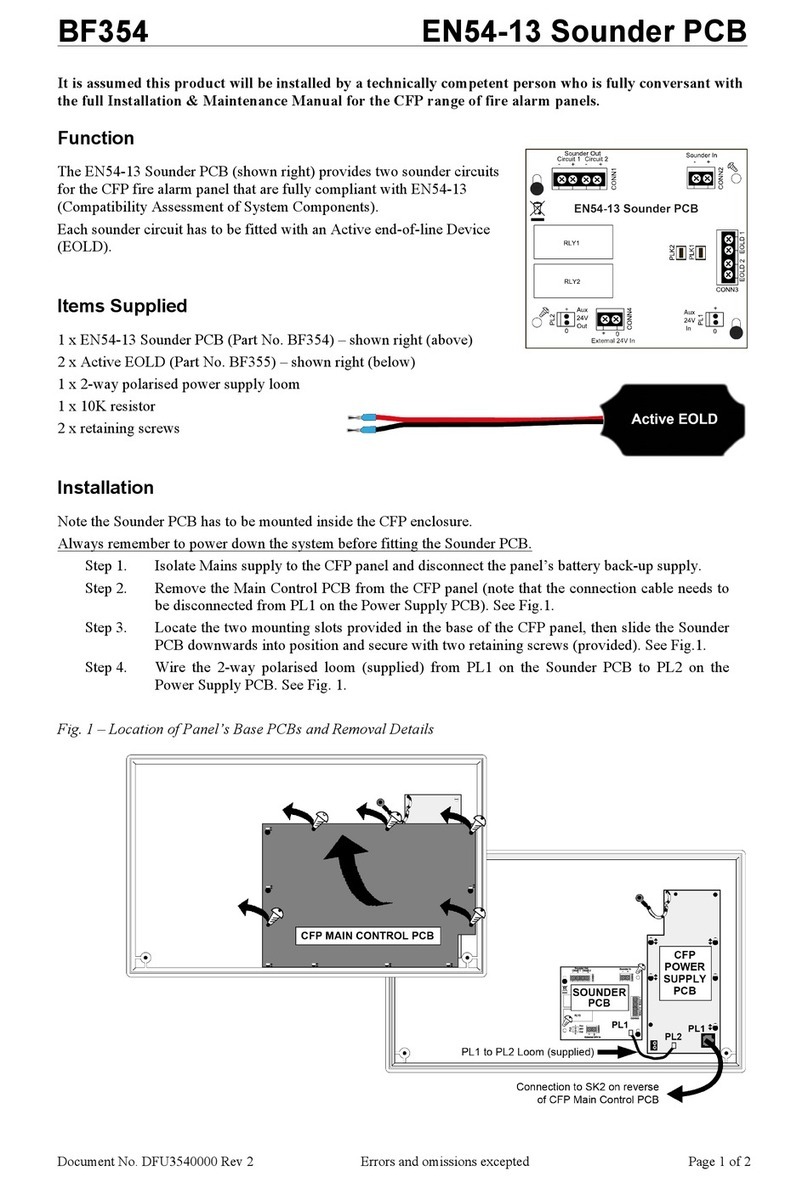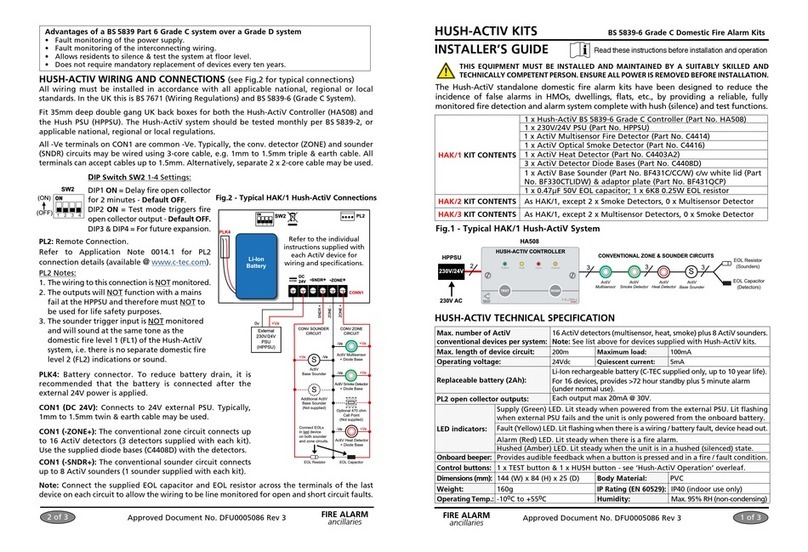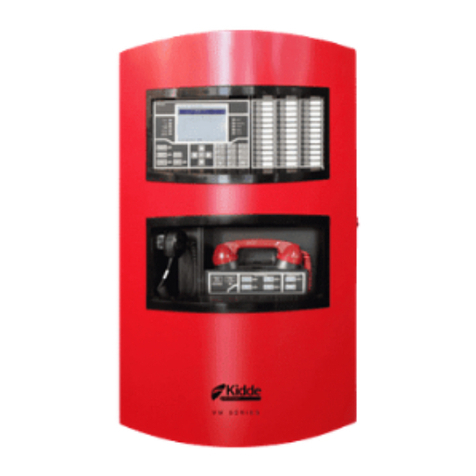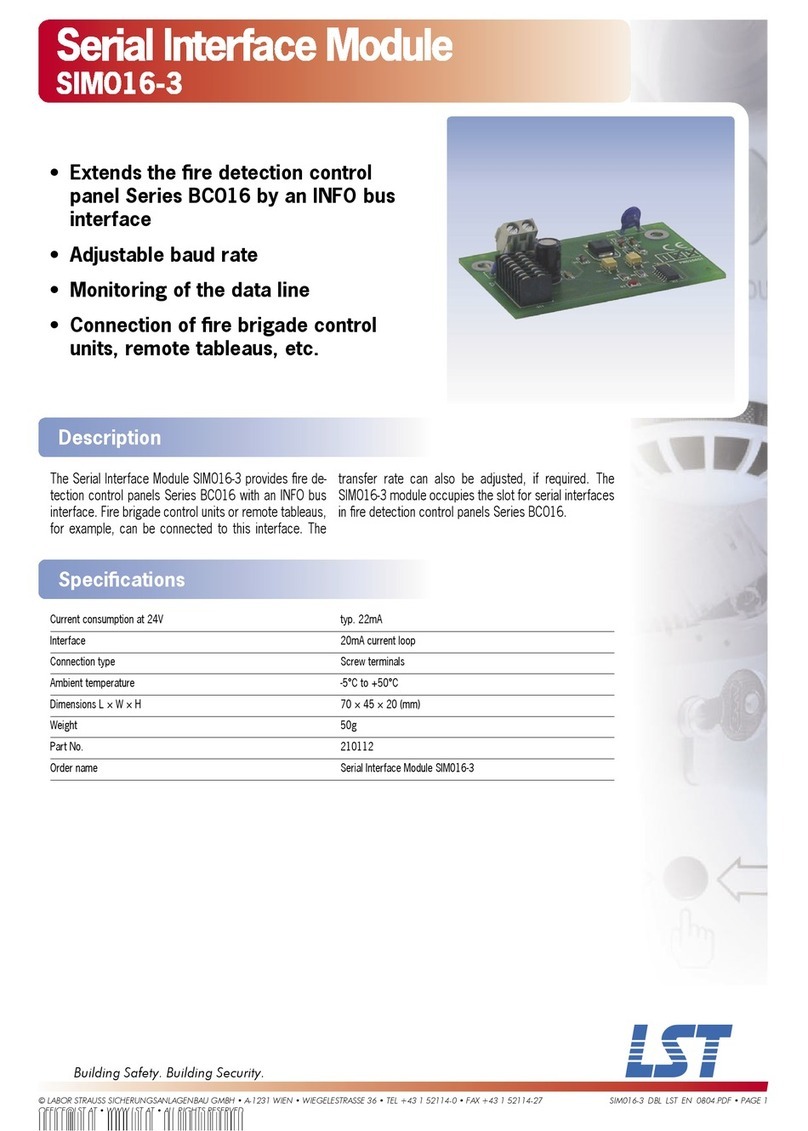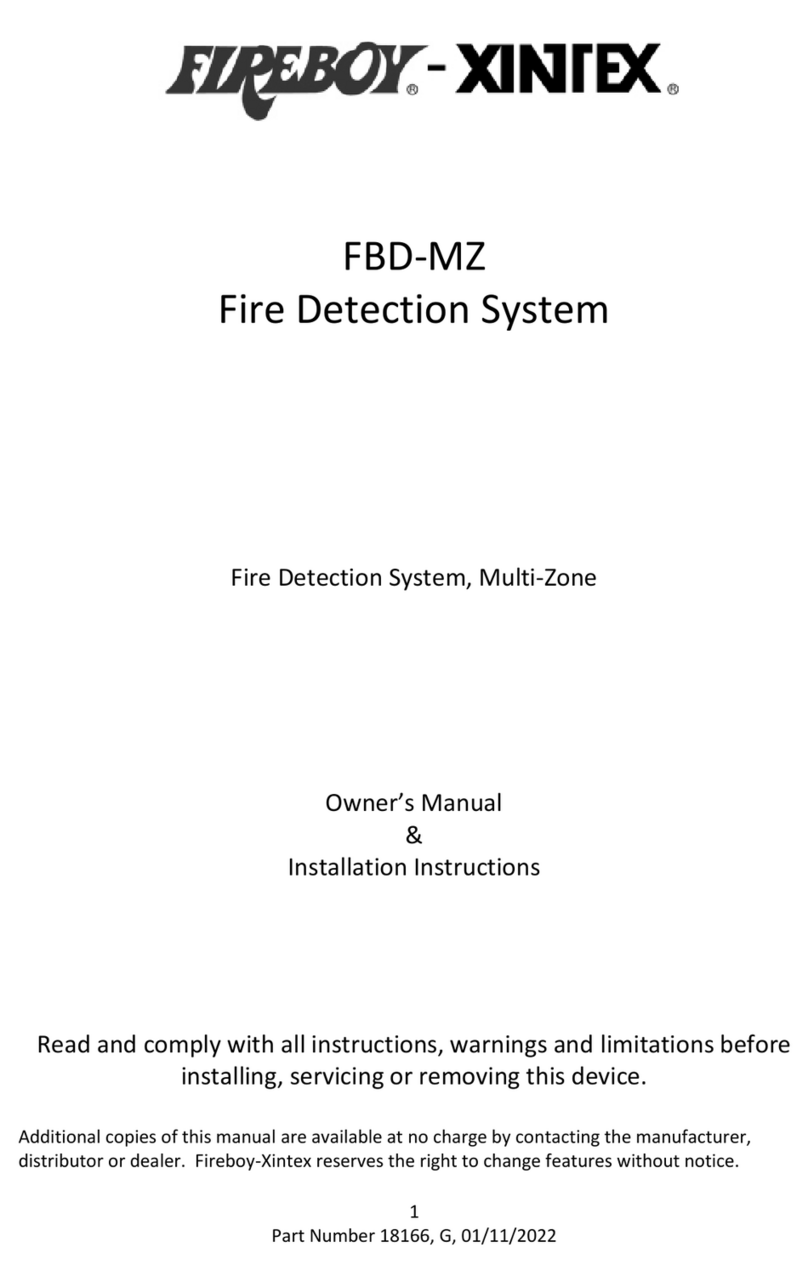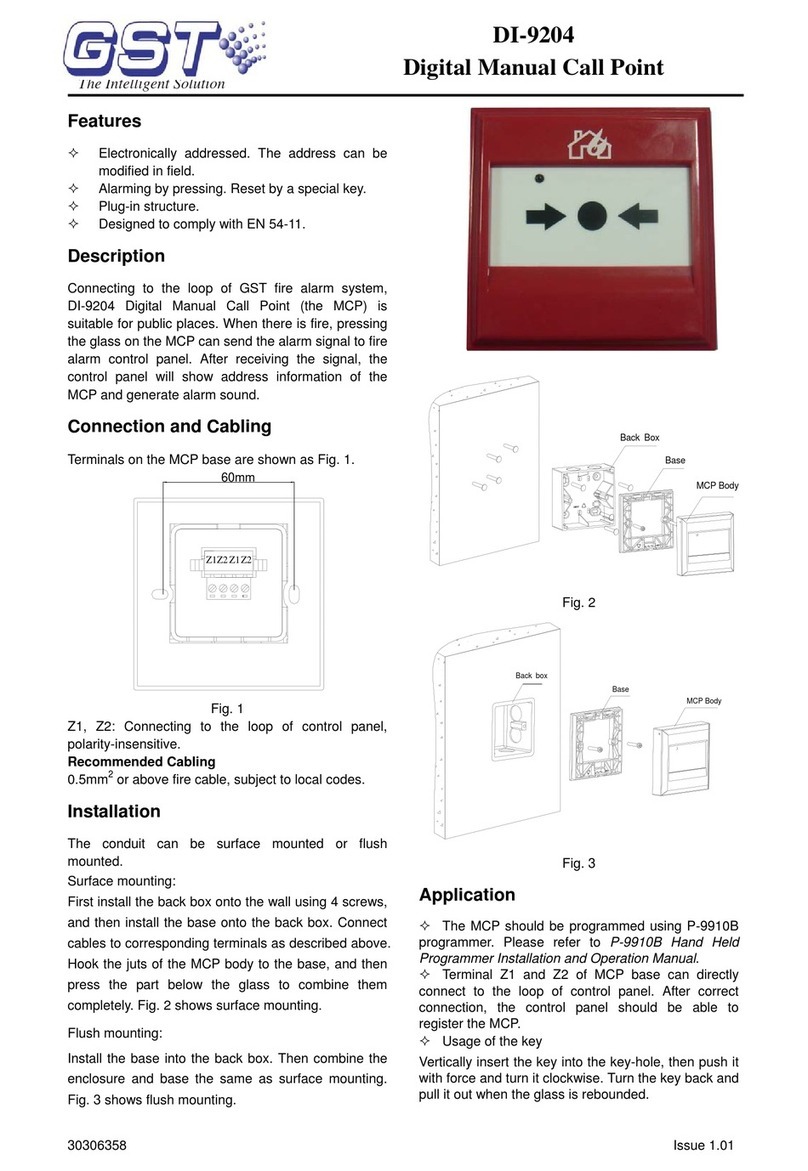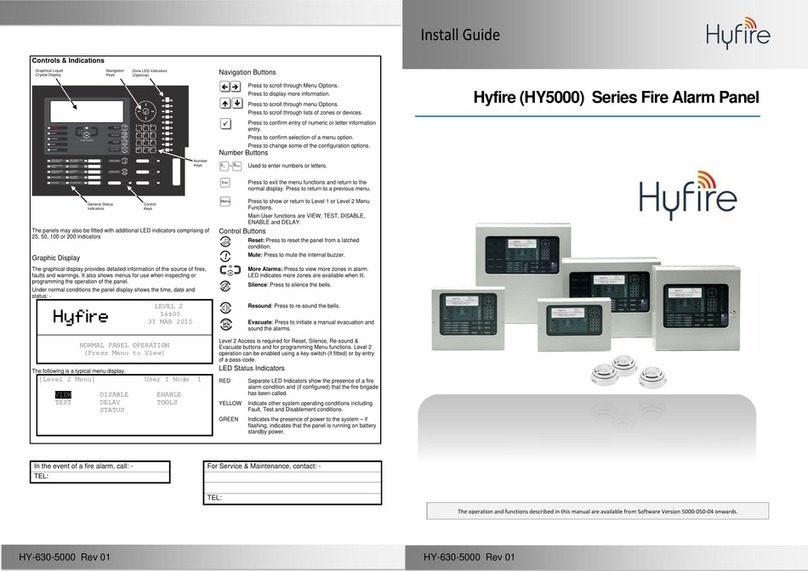EP203 AUTOMATIC EXTINGUISHER PANEL
Page 2 of 45 • EP203 AUTOMATIC EXTINGUISHER PANEL INSTALLATION MANUAL • Approved Document No. DFU0002032 Rev 4
CONTE NTS
IMPORTANT NOTES ............................................................................... 4
BASIC OVERVIEW AND KEY FEATURES.................................................... 6
INSTALLATION AND WIRING .................................................................. 9
The EP203 Panel Enclosure ........................................................................................................................9
Removing the Lid and Base PCBs...............................................................................................................9
FIRST FIX..............................................................................................11
Cable Types and Limitations ................................................................................................................... 11
Planning the Cable Entry and Distribution within the EP203 Panel ............................................... 11
Siting and Mounting the EP203 Panel .................................................................................................. 12
Mains Wiring .............................................................................................................................................. 12
Detector Circuit Wiring............................................................................................................................. 13
Sounder Circuit Wiring ............................................................................................................................. 13
Monitored Input Wiring ........................................................................................................................... 14
Auxiliary Output Wiring........................................................................................................................... 14
Remote Control Wiring ............................................................................................................................ 15
Extinguisher Output Wiring .................................................................................................................... 16
Connection to RSUs and ESUs .................................................................................................................. 18
SECOND FIX .........................................................................................19
Connecting the EP203 Panel ................................................................................................................... 19
Installing the Power Supply PCB and Output Expansion Relay Board............................................. 19
Connecting the Mains Supply .................................................................................................................. 19
Connecting the Standby Batteries.......................................................................................................... 20
Installing the Main Control PCB ............................................................................................................. 21
Connecting Circuits to the Main Control PCB ....................................................................................... 21
PROGRAMMING THE EP203 PANEL........................................................22
General User Controls (Access Level 1) .................................................................................................. 22
Authorised User Controls (Access Level 2)............................................................................................. 22
Engineer Controls (Access Level 3) ......................................................................................................... 23
Accessing and using the Engineer Controls .......................................................................................... 23
ACCESS LEVEL 3 MENUS........................................................................24
Overview ..................................................................................................................................................... 24
Display Faults ............................................................................................................................................. 25
Display Dis/mnt .......................................................................................................................................... 25
Zones in Test .............................................................................................................................................. 25
Display RSUs................................................................................................................................................ 25
Disablements.............................................................................................................................................. 26


